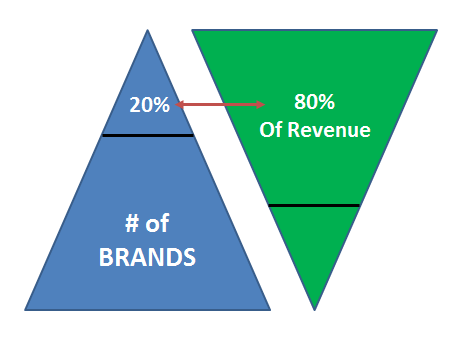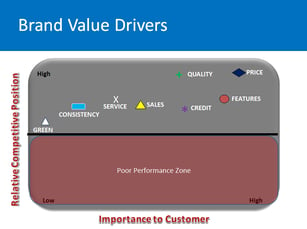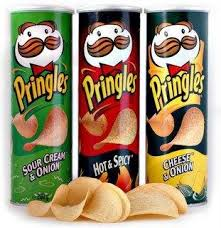
Some very interesting business acumen and business leadership news coming from Consumer Packaged Goods (CPG) giant Procter & Gamble (P&G), who announced last week that it is going to drop up to 100 brands over the next two years. This is a huge strategic pivot for P&G, who is signaling to its customers, consumers, and shareholders that it is going to have a tighter focus on investing in profitable assets and reducing investments in lower margin assets.
The “big idea” behind this move is to put more focus on the core 70 to 80 brands that generate the most revenue and profit. Currently, about 20% of the total brands generate more than 80% of P&G’s profit and that critical factor is significantly hurting shareholder value.

The general rule of thumb at P&G is that if a brand is generating less that $100 million in revenue, it is not valuable asset. Three of P&G’s most iconic brands - Pampers, Crest, and Tide – each generate over $1 billion in annual revenues. P&G’s total sales are over $83 billion.
P&G Chief Executive Officer A.G Lafley stated “Less will be much more.” In addition, he suggests that P&G is going to become a “faster growing and more profitable company that is easier to operate.”
This latest announcement comes just a few years after P&G sold their pet foods (Iams, Eukaube, and Natura) to Mar for $3 billion and sold Pringles potato chips to Kellogs for over $2.7 billion. From a financial acumen perspective, P&G’s revenue increased by just 1% and its net income (profit) was about $11.6 billion. These moves indicate that Lafley and the board believe that they should be doing much better.
Over the past 50 years – since the birth of modern marketing in the 1960’s – companies have always believed that the Holy Grail of consumer “productism” was more and more brands. For many years, this was sound logic; grow more brands, grow more customers, grow more revenue, grow more profit, and ultimately grow more shareholder value.
In 2014, this equation doesn’t work as well. The basic “entry ticket” amount of investment needed to support new and fledging brands has become so prohibitive it is almost impossible to create sustainable long-term value. At the same time, social media marketing can make or break a brand in a matter of days, if not hours.
So why have this brand proliferation (SKU growth) in the first place? Based on our experiences and studies over the years, there are quite a few solid reasons why companies engaged in this process and belief:
“Brands grow over time” – In markets with a lack of competition and zero social media, brands could present their value proposition to their customers and grow them over time with sustained marketing and brand management.
New customers – New brands potentially bring in new customers. These new customers could / should cross-purchase other brands in the portfolio.
Bundling – Marketers could “bundle” products together to drive revenue. For example, razors, blades, AND shaving cream.
Mitigate risk – A wider portfolio of products mitigates risk if something goes wrong or if there is a change in the market. For example, men are shaving less and buying less razor blades. But men are paying more attention to their hair, beards, and mustaches, so products that support this trend could be a brilliant strategy.
At Advantexe Learning Solutions, we are world leaders in the design, development, and delivery of business acumen and business leadership skill building engagements. One of the concepts that we train is brand value drivers. A brand value driver is the combination of factors that create the perception of the brand in the minds and hearts of customers. Understanding the brand value drivers can mean the difference between success and failure.
P&G is making strategic moves based on brand value drivers. The core brands like Tide and Crest have a majority of brand value drivers above the line. Being above the line means that relative to competition, your brand is presenting a better complete combination of total value.
In the graphic below, all 8 of the key value drivers are above the line which means relative to the completion, this brand is offering a complete and integrated total solution.
In the graphic below, this brand is not doing very well. Only two of the brand value drivers are “above the line”: service and credit terms. In this situation, cheaper brands with similar or actually better quality are beating our brand in every other category. In effect, customers really do not care about these products and have no emotional connection.
Basically, these brands are undifferentiated and for a strategy like P&G’s, that is unacceptable. The cost in time and resources to make them viable is probably too overwhelming, and therefore it is easier to divest them.
Take the example of Pringles potato chips. In the world of salty snack chips, which is dominated by  Frito-Lay, Pringles could not provide an adequate return to P&G. Caught someplace in between the perfect storm of quality, marketing, healthiness, and the emergence of cheaper store brands, Pringles could not find a differentiated niche set of customers.
Frito-Lay, Pringles could not provide an adequate return to P&G. Caught someplace in between the perfect storm of quality, marketing, healthiness, and the emergence of cheaper store brands, Pringles could not find a differentiated niche set of customers.
The Future: Invest in Strong Brands
Tide is the nation’s bestselling laundry detergent. P&G wants it to be the most important detergent in the world. Instead of wasting money on flat and underperforming brands, P&G can fortify Tide with new and critical innovation. For example, by partnering with DuPont, P&G is about to change the world with the best cold water detergent ever made. This unique technology will allow citizens of the planet to get even cleaner cloths without having to waste the energy required to heat water. Customers get better value, less heating costs, and get to save the world through this new technology.
In summary, this is a great thing for P&G, their shareholders, and consumers. I hope that other companies are as smart and dedicated. Looking forward to your thoughts…




